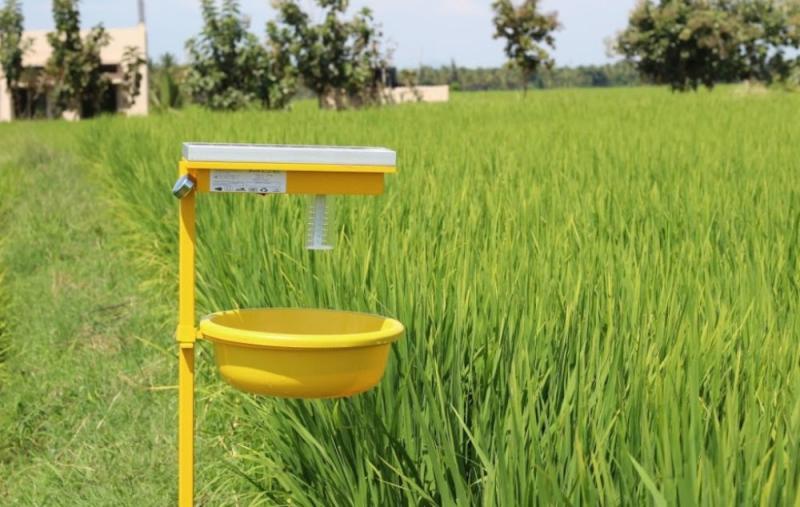
With the dominance of environmental concerns and the urge for sustainable practices in this era, carbon neutrality has emerged as a prime goal that businesses across the globe want to attain. While organizations strive to reduce their impact on the environment, market research comes up as a very important tool that could be used to navigate the complex maze of sustainability. This paper analyzes the contribution of market research in attaining carbon neutrality and how it can extend further to contribute to broader goals of sustainability.
1. Understanding Carbon Neutrality
1.1 Defining Carbon Neutrality
Market research will, therefore, be discussed in the subsequent paragraphs. However, it is essential first to explain what carbon neutrality means. Carbon neutrality, popularly known as net zero emissions, refers to a situation wherein the entity has carbon emissions equaled by an action that removes or offsets an equal measure of greenhouse gases from the atmosphere.
1.2 The Importance of Carbon Neutrality
Setting a background of why companies do it is easy carbon neutrality matters. Carbon neutrality does not merely mean an environmental responsibility rather, it is entailed with huge implications for social and economic aspects also. The reduction of carbon emissions is associated with objectives related to global sustainability, mitigating the adverse effects of climatic change, and creating a more resilient and secure future for the planet.
2. Market Research as a Catalyst for Change
2.1 Identifying Environmental Impact
Market research plays a key role in helping organizations locate their environmental footprint. Organizations would be able to identify main areas of operations that predominantly contribute to carbon emissions through rigorous analysis. Such information forms the basis for strategic decisions in the quest for carbon neutrality. It is the knowledge of the specific sources of emission that companies use to come up with focused initiatives to address mitigation measures against an organization's environmental impact.
2.2 Consumer Perception and Demand
Market research also involves the analysis of consumer attitude and preference. With sustainability playing an increasingly important role in consumer purchase decisions, insight into consumer perception and demand is relevant. The trend has been that consumers are more willing to patronize a business with green practices. Market research places a company in a better position to align carbon neutrality efforts with consumer expectations, therefore improving market positioning and securing customer loyalty in the long term.
2.3 Competitor Analysis
Benchmarking competitors in sustainability helps one to stay ahead in the market. Proper market research will allow a business to measure carbon neutrality activities with the best in the sector and learn from them. Such competitive intelligence may give industries players a sense of collaboration and effectively speed up the entire process toward attaining sustainability. A company can understand best practices and challenges other companies have undergone in implementing their strategies and thus make informed decisions on what to do and how to enhance their strategies in carbon sustainability.
3. Beyond Carbon Neutrality: Market Research in Broader Sustainability Initiatives
3.1 Renewable Energy Adoption
It does not end at the promotion of carbon neutrality but facilitates the adoption of renewable sources as well. Market research helps organizations embrace sustainable energy solutions by deciphering market trends, technological feasibility, and economic viability, thus further reducing the ecological imprint. In analyzing the market for renewable energy technologies, firms are able to pinpoint opportunities where investment and growth may occur in clean energy infrastructure.
3.2 Circular Economy Strategies
Research in circular economy models involves deep market research to identify possibilities of recycling, reusing, and reduction of wastes. This would provide an understanding of the market demands with regard to eco friendly products and sustainable practices, hence helping businesses design strategies that work in accordance with the principles of a circular economy. It identifies consumer preference for circular products, assesses market potential for closed loop systems, and hence provides relevant information to companies developing sustainable products in order to partake in the circular economy.
3.3 Supply Chain Sustainability
Market research is instrumental in the review of supply chain sustainability. The impact from suppliers on the environment can be quantified, and sustainable alternatives can then be located in a plan for an overall sustainability strategy. Apart from contributing to a cleaner environment, this also cements a supply chain that will be stronger. Businesses will know the sustainability practices of suppliers and hence make informed decisions in line with their carbon neutrality goals toward a more sustainable and ethical supply chain.
4. Challenges and Opportunities in Integrating Market Research with Sustainability
4.1 Challenges
There are a number of challenges that need to be met in integrating market research with sustainability initiatives for success. For example, sustainability data is often cumbersome to interpret. The data might be enormous and heterogeneous, requiring specialist skills to make sense out of it. Another challenge that businesses could encounter is getting proper data in terms of reliability, mostly during the study of sustainability practices by suppliers or partners. That will entail investment in expertise and technology capable of working out the intricacies of sustainability data.
4.2 Opportunities for Innovation
It does not only identify challenges but also discovers the opportunities for making novelty. By developing an in depth understanding of market dynamics, businesses become more likely to innovate products, services, and processes that reduce environmental impacts while satisfying shifting consumer expectations. Market research provides a basis for establishing where the gaps in the market exist, where sustainable solutions can be offered. Such opportunities could well offer the basis on which companies are to innovate in terms of products and services in ways that not only serve sustainability goals but also drive resonance with environmentally conscious consumers.
5. The Evolving Landscape of Sustainability and Market Research
5.1 Emerging Trends in Sustainable Business Practices
While the world wrestles with the repercussions of climate change and environmental degradation, so have the ways of doing sustainable business progressed. It places market research at the very fore of tracking and analyzing emerging trends in sustainability. This ranges from renewable energy technologies' innovations to the Circular Economy model and supply chain practices. By so doing, a business can easily adjust its strategies in light of the latest sustainability practices that help it sustain competitiveness within the market.
5.2 Global Initiatives and Regulatory Frameworks
Through market research, businesses monitor global initiatives and regulatory frameworks associated with sustainability. To that effect, with the coming of policies by governments and international bodies to combat climate change and support sustainability, market research helps businesses grasp and comply with those regulations. Also, pre emptive action on regulatory change permits companies to lead in matters of sustainability, therefore acquiring the trust of consumers and investors.
6. Conclusion
On the other side, market research acts as the keystone in the pathway to sustainability. It delivers carbon neutrality through the broadening of its environmental objectives. Hence, market research is what helps businesses make conscious decisions regarding carbon Neutrality. As firms move towards this landscape of sustainability, not only do they take a step towards a healthier planet, but they also position themselves as leading companies within an ever growing eco conscious market. Blending market research with sustainability initiatives is not a business strategy but a promise to create a livable future for generations yet to come. Hence, businesses that use market insights will be in a position to take positive actions toward making innovation happen and creating a reputation as a responsible guardian of the environment.
Trending Posts

Global Silver Nanoparticles Market
The global silver nanoparticles market was valued at $2.08 billion in 2020, and is projected to reach $4.1 billion by 2027, growing at a CAGR of ~17%

The Basic Pension Comes - Federal Cabinet Decides On the Pension Supplement
Financial security in old age is an issue that is causing stomach pains for more and more people in Germany. Low-wage earners fear the elderly. The ba

The Future of Artificial Intelligence
In recent years, the field of artificial intelligence (AI) has witnessed unprecedented growth and transformative advancements. As AI technologies

"LNG Bunkering" Here is something you must know!
In the current scenario of growing pollution, companies are trying to adapt more and more sustainable approach that not only gives eco-friendly result

Sailing into the future with Autonomous Ships
Autonomous Vehicles (AVs) are the uproar of this era. After airways, thanks to the companies like Tesla, that people are now getting used to see drive

Rising Demand For Uninterrupted Power Supply Is Expected To Drive The Power Rental Market
Todays world is totally reliant on electric power. There are many things which are not manageable without electricity. Power rental is a concept where

Rapidly growing IT industry coupled with the trend of bringing your own device (BYOD) is expected to provide new opportunities for growth of Cloud Collaboration
Cloud collaboration is the process of sharing and co-authoring the computer-based work through cloud technology

Fact check on UV Disinfection for COVID-19
Many regulatory authorities and bodies believe that UV disinfection technologies can play a role in a multiple barrier approach to reducing the transm

Vaccination: Vaccination Against Measles is Now Mandatory in Germany
The subject of compulsory vaccination has always heated peoples minds and caused emotionally charged discussions. The latest law in this area - the ob

The Global Ventilator Market Grows at a CAGR of 7.75 %
The Global Ventilator Market, which was at $688 million in the year 2016, is about to double by the year 2025, and reach a value of $1,347 million. Th
Recent Posts

Gold at Historic Highs in 2025: Strategic Implications of a Flight to Safety
Gold has reached unprecedented valuation levels in 2025, crossing $3,175 per ounce globally and nearing ₹94,000 per 10 grams in India—a 23% increase year-to-date

The Escalating U.S.-China Trade War: Strategic Implications for the Global Economy in 2025
In 2025, the U.S.-China trade war has reached an inflection point, introducing heightened complexity and volatility into the global economic system.

Tariffs & Trade: Key Trends, Policies, and Market Impact
A tariff is a tax imposed by a government on imported or exported goods. It is primarily used to regulate international trade by either encouraging domestic production or generating revenue for the government.

The Global Buy Now Pay Later (BNPL) Market: Growth and Opportunities
The global Buy Now Pay Later (BNPL) market has emerged as a revolutionary financial solution, transforming how consumers approach shopping and payments. Offering flexibility and convenience, BNPL allows consumers to make purchases and pay.

Global Motorhome Market: Growth and Forecast
The motorhome market has gained significant momentum over the past decade, driven by rising interest in outdoor tourism, evolving consumer lifestyles, and advancements in vehicle design and technology. As a preferred option for travelers seeking.

The Global Poppy Seed Market: Growth and Trends
Poppy seeds, derived from the opium poppy plant (Papaver somniferum), have been a vital component in global culinary, pharmaceutical, and personal care industries for centuries. The global poppy seed market is gaining traction due to its versatility.

Global Plant Breeding and CRISPR Plants Market
The global food industry is facing immense pressure due to rising population levels, diminishing arable land, and the impact of climate change. Innovations in plant breeding, particularly the use of CRISPR technology, are reshaping the agricultural .

Global Pheromones Market – Trends, Opportunities, and Forecast
The global pheromones market has witnessed significant growth, primarily driven by the rising demand for eco-friendly pest control solutions in agriculture. Pheromones, natural chemicals emitted by insects and other organisms to communicate.

The Role of Technology in Oil and Gas Risk Management
In an industry as dynamic and complex as oil and gas, risk management is crucial for ensuring operational efficiency, regulatory compliance, and safety. Risk management software has become an indispensable tool for companies in this sector.

Global Smart Grid Sensors Market
The global energy landscape is undergoing a significant transformation, with smart grid technologies at the forefront. Smart grid sensors, a critical component of modern energy grids, enable efficient monitoring, energy distribution.
.png)